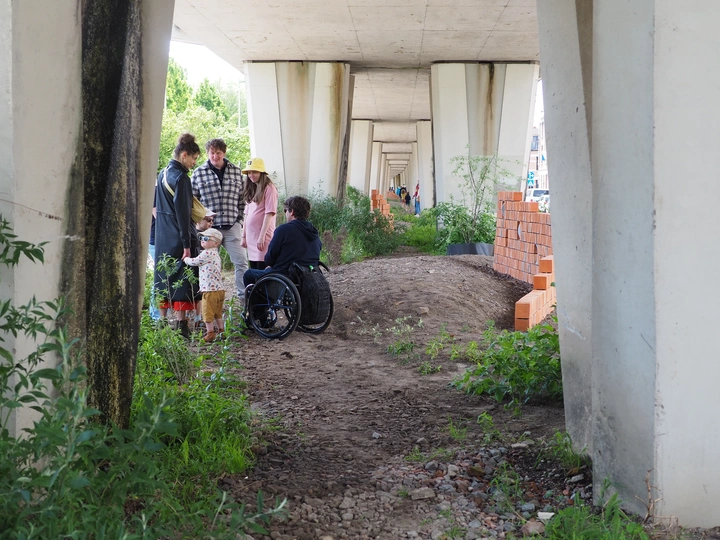Project 33 - wasteland wonder

Kris Drieghe
Tinne Beirinckx
°1977 - Urban planner - landscape architect - builder with natural materials
Working as a landscape architect and spatial planner.
Passionate about authentic construction methods, crafts, permaculture and the influence of green spaces on quality of life.
Fascinated by the influence of the built and unbuilt environment on human life.
Convinced that architecture and urbanism can and should play an important role in the social development of a community, in tackling global challenges such as climate change, conflict and social segregation.
Believes it is crucial in any project to take into account topography, landscape, relationship with existing buildings, water system, wind and the importance of the site on the mental map of villagers or townspeople.
Considers the process of co-creating and building together as valuable as the end result.
Kris Drieghe
°1985 - Architect- community builder - space curator
Working as an architect and facilitator of co-creating the public space.
Collaborated with various organisations to experiment with co-creation in Belgium and abroad. Raumlabor Berlin, Hello Wood, 72hua, Urbikon, Meds, Hrins. Created several small installations and urban interventions mostly with natural materials such as wood, clay, wool, straw,..
Trying to activate people with the concept of learning by doing and enhance social interaction by building together.
With the ambitious plan of creating a green gateway, Sint-Niklaas literally pushed the limits. Curator Kris Drieghe came up with a concept in which greenery and art reinforce each other. An important goal of Project 33 was to actively involve the residents of Sint-Niklaas in the execution of the project. Local residents, schools and associations were able to contribute to the creation of the green space and the work of art.
Landscape architect Tinne Beirinckx came up with a system to disconnect the rainwater that drains through the pillars on site and collect it in ponds. From the ponds, the surrounding space is watered to enable plant growth here as well. The extreme growing conditions necessitate a strict selection of the strongest plants suitable for this environment. In addition, spontaneous vegetation will develop, so eventually an ecosystem will emerge in this median strip. The design of Project 33 plays with small differences in height and a path winding between the plants and the artworks.
As part of Project 33, Elise Eeraerts and Roberto Aparicio Ronda created an extraordinary artwork, “Clay (Sint-Niklaas),” consisting of
10 sculptures that appear in different locations under the bridge. The sculptures consist of different types of modular building blocks, which have local clay as their raw material. As a result, they respond strongly to the clay soil that is so characteristic of this region's brick making past:
- on the one hand, hand-formed modules which are based on the shape of the railroad pillars. More than 600 locals participated in clay modelling guided by the artists.
- On the other hand, 3D printed clay sculptures with various patterns. These relate to the history of the city or refer to motifs from the street scene. Drawings and ideas for this were provided by students of the local school.
The project is recently finished. The final view on the project will change over time since the ecosystem will evolve spontaneously over the years.